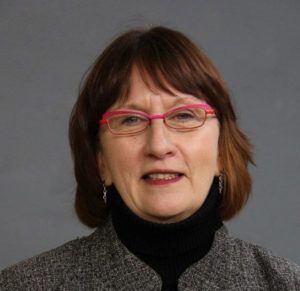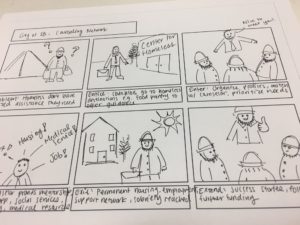Ethnography Summary
Victoria Velasquez interviewed Diana Hess of Neighborhood Resources Connection.
Date: 4/4/17
Type: Expert
Location: Diana’s office in Downtown South Bend
Team participants: Conducted interview alone
User Characteristics:

Female, age 50s
Director of South Bend non-profit Neighborhood Resources Connection; member of the St. Joseph County Council
Sits on various committees in the South Bend community, including the committee for homelessness
Victoria met her when working on a project for NRC in her Project Management class
What is this person about – what drives him/her? Diana is driven by her selflessness and her desire to make this city a better place to live. She is very involved in the community and wants to empower people to better their neighborhoods that they call home.
What is this person’s biggest point of pain? She has a hard time convincing people in the community that the work that she does with her non-profit is valuable and worthy of their donations.
Memorable quote from interview: “Most neighbors want protection in their neighborhoods.” “Housing is a big issue for everybody.” “Some landlords are purely horrible.” “It’s always the same neighborhoods that end up with the short end of the stick.” “People get used to not being heard, so they have trouble trusting people who want to help.” “Most people end up doing petty crimes as a way to belong.”
Top 3 Learnings:
- No matter who you are, you want to live in a safe community.
- There’s a lack of affordable housing in the South Bend community.
- Community members use neighborhood associations to discuss and address problems of homelessness and crime.
Key Insight – (1) Community members in low-income neighborhoods are discouraged and aren’t optimistic about improving their communities. (2) Young people living in at-risk communities need to be busy and involved in their communities so that they don’t resort to committing crimes and doing things that will land them behind bars.
Activities:
- Arrived at the Downtown South Bend offices
- Walked upstairs to Diana’s office
- Entered her office after knocking and hearing her say, “Come in!”
- Sat around her desk and asked questions about NRC
- Shifted the conversation to NRC’s Tapas and Tango fundraiser
- Exchanged goodbyes and headed out of the building
Environment
- Afternoon on a Thursday
- Downtown South Bend offices, which are located upstairs above the Pigeon and the Hen Pottery
- The Downtown South Bend offices were a bit busier than they normally are with almost all of the offices being occupied with someone working at a computer
- The environment was a bit tense as Diana was stressed with all that she had going on
Interactions:
- Victoria arrived at Diana’s office and knocked on her door to her office
- Diana cleared off her desk a little so that Diana and Victoria could sit down
- Diana answered Victoria’s questions about NRC and its role in promoting neighborhood safety
- Diana and Victoria concluded by talking about another project that Victoria is helping Diana with—Tapas and Tango, a fundraising event for NRC that Victoria and her team were developing marketing materials for
Objects:
- Diana’s computer
- Pictures of neighborhood associations
- Stacks of papers, folders, and binders scattered across Diana’s desk
Users:
- Diana
- Victoria
- Other people working in their offices in the Downtown South Bend building
